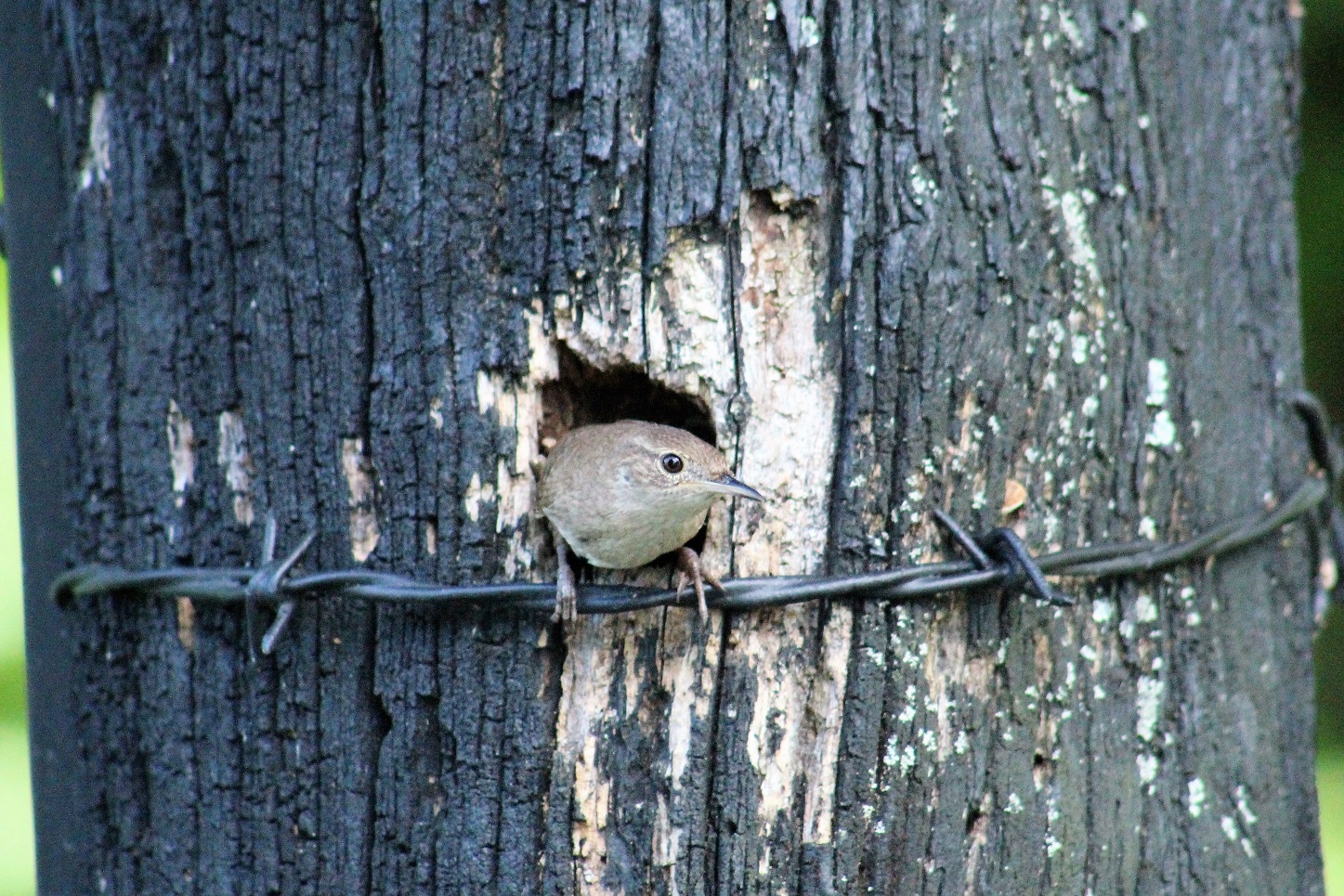One of our most anticipated backyard migrants is the House Wren. Arriving here around Earth Day, these feisty LBJ’s (little brown jobs) make up for in song what they lack in fancy colors. They may only weigh as much as two quarters, but they sing like a million dollars.
And sing they do, almost nonstop after arriving at their nesting territory until shortly before leaving again for their winter haunts. They have one of the prettiest songs of any bird out there.

The House Wren (Photo by Gayle Pille)
House Wrens are undisputedly the most widely distributed bird in the Americas. They range from Canada to the southern tip of South America. Lucky for us, these common birds with oodles of personality are more than happy to live around people. They will readily use tree hollows and nest boxes, not to mention flowerpots, tin cans, cow skulls and boots.
Famed artist John James Audubon painted a family of House Wrens nesting in an old hat.
Their nests are a piece of work – hard work. Almost immediately upon arriving in his territory, the male starts building nests in multiple cavities to attract a female.
Made of small sticks, each nest takes about a week to build. Up to 500 sticks have been counted in a single nest! The female makes the final decision on which nest will be used, throwing away any unwanted sticks and then lining the nest with appropriate bedding for her precious eggs.

Young House Wren in a nest
Raising their young is about a six-week process. The female generally lays six to eight eggs. Incubation takes about two weeks.
After hatching, both parents continue to raise their young in the nest cavity for another two weeks before they fledge. The fledglings are fed for another two weeks before they are on their own. Then the whole process starts all over again. House Wrens usually raise two to three broods per season. And while they are generally monogamous, some birds do have cheating hearts and mix up the gene pool a bit.
They never seem to sit still. House Wrens have been described as perky, hyperactive, sprightly, loud, bubbly, and bold. In a word, they’re downright cute.

House Wren with stick. (Photo by Dave Slaughter)
Never far from the safety of a tree or shrub, they can frequently be seen sitting atop a branch with their tail cocked and head raised high in song before fluttering for cover. They have tons of personality and are always a bright spot in a birder’s day.
Nest boxes are a dream come true for House Wrens; they take right to them. The wrens aren’t picky either. They’ll use a nest box hanging from a tree, mounted to a post, or hanging from the eave of a building.
Their only requirement is a little bit of shrubby cover close by. So if you’re lucky enough to attract them, House Wrens are a simple joy to watch and music to the ears.
Gayle Pille is a local naturalist and nature writer who many know through her work to establish the five-mile network of nature trails at Highland Cemetery in Ft. Mitchell. She created the cemetery’s popular 25-year-old Wildlife Enhancement Program and works with a small team of volunteers to maintain the cemetery’s wooded walking paths. An avid birdwatcher, Gayle also builds custom wildlife nest boxes for businesses, parks and residences through her business, www.woodlandhabitat.com
Featured image picture by Dave Slaughter


























Gayle, It’s always a treat to read your articles.